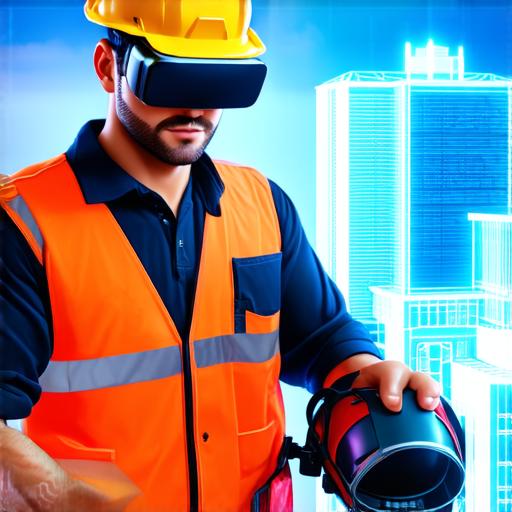
How can the construction industry utilize virtual reality?
Virtual reality (VR) technology is revolutionizing industries around the world, and construction is no exception. The ability to create immersive digital experiences has opened up new possibilities for planning, designing, and building structures that are safer, more efficient, and more cost-effective than ever before.
One of the most significant ways that VR is being used in construction is for planning and design. Virtual reality allows architects and engineers to create incredibly detailed models of their projects, which can then be used to test different design options and make adjustments as needed. For example, a virtual reality model can be used to simulate the effects of wind or earthquakes on a building structure, allowing designers to identify potential weaknesses and make changes before construction begins. This not only saves time and money but also ensures that the final product is safe and efficient.
Another way that VR is being used in construction is for training and education. Virtual reality simulations can provide hands-on training experiences for workers, allowing them to practice skills and techniques in a safe environment. This not only improves safety on the job site but also helps reduce costs by eliminating the need for expensive equipment or specialized materials. For instance, workers can use VR simulations to practice welding or scaffolding without the risk of injury or damage to equipment.
Virtual reality is also being used for project management and scheduling. With VR, project managers can create 3D models of their projects and use them to track progress and identify potential issues in real-time. This allows for more efficient communication between team members and can help prevent delays and cost overruns. For example, a virtual reality model can be used to identify areas where materials or labor are needed, allowing project managers to adjust schedules accordingly.
One example of how VR is being used in construction is by the company Bechtel, which recently completed a virtual reality training program for its construction workers. The program, which was developed in collaboration with the University of California, San Diego, allowed workers to practice welding and other skills in a simulated environment. This not only improved safety on the job site but also helped reduce costs by eliminating the need for expensive equipment or specialized materials.
Another example is the use of VR in the design of the Burj Khalifa in Dubai, one of the tallest buildings in the world. The architects used virtual reality to create a 3D model of the building and test different design options, including changes to the structural system and the placement of windows. This helped ensure that the final design was safe and efficient, while also being aesthetically pleasing.
Virtual reality is also being used in construction for marketing and sales. For example, some companies are using VR simulations to showcase their products and services to potential clients. This allows clients to see and experience what a company has to offer in a way that traditional media cannot. For instance, real estate agents can use VR simulations to give potential buyers a virtual tour of a property, allowing them to see the space as if they were actually there.
While virtual reality technology is still relatively new, it has already had a significant impact on the construction industry. By improving planning, design, training, project management, and marketing, VR has the potential to improve safety, efficiency, and cost-effectiveness in construction. As the technology continues to evolve and improve, we can expect to see even more innovative uses of virtual reality in construction in the future. With the ability to create immersive digital experiences, VR is revolutionizing the way we plan, design, build, and manage structures.

In conclusion, virtual reality is transforming the construction industry in numerous ways. From planning and design to training and marketing, VR has the potential to improve safety, efficiency, and cost-effectiveness in construction. As the technology continues to advance, we can expect to see even more exciting uses of virtual reality in the industry. With the ability to create immersive digital experiences, VR is revolutionizing the way we plan, design, build, and manage structures.


